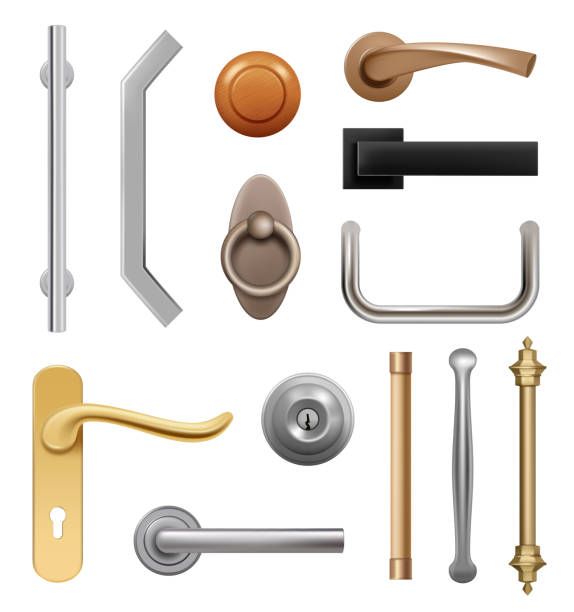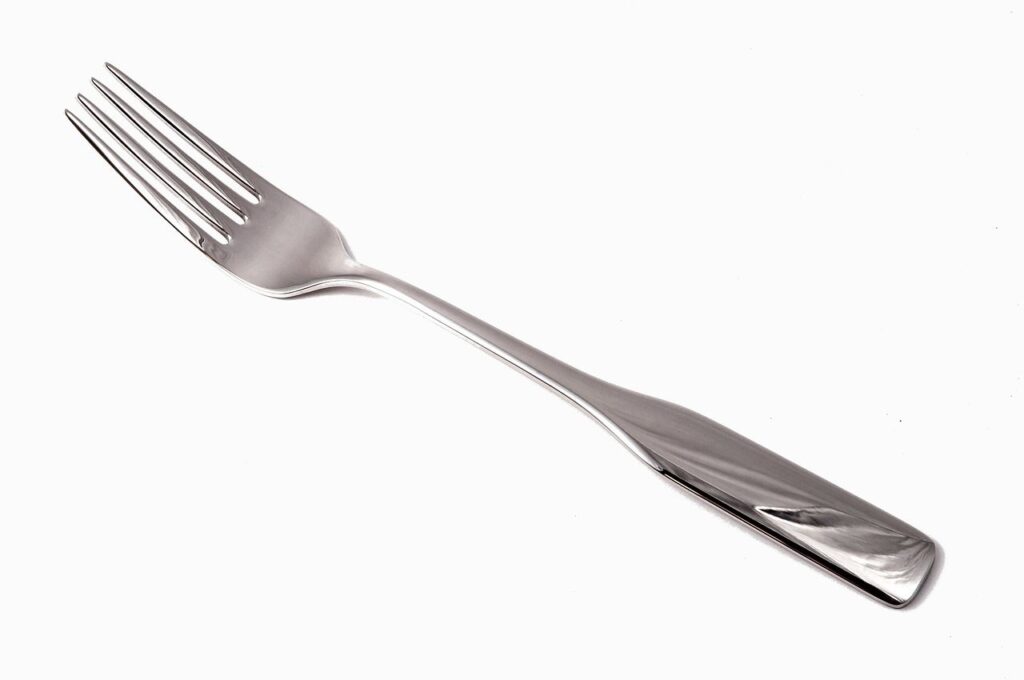
Unveiling the Wonder: 10 + Wonderful Facts About Everyday Objects We Take for Granted
Unveiling the Wonder: 10 + Wonderful Facts About Everyday Objects We Take for Granted
In the midst of the hustle and bustle of our daily lives, we frequently fail to see the marvels that are all around us. These are the ordinary things that have become so embedded in our routines that we scarcely give them a second thought. These things, which range from the humble pencil to the ubiquitous paperclip, have a complex tapestry of history, design, and purpose that is frequently overlooked. The purpose of this blog post is to take you on a trip of discovery, revealing the marvel that lies behind these seemingly little artefacts, investigating the history that led to their creation, and revealing the intriguing truths that make them important to our contemporary lives.
1. The Humble Pencil: More Than Just Graphite and Wood
Imagine a world without the humble pencil. No jotting down notes, no sketching dreams, no childhood memories etched in graphite. The pencil, with its seemingly simple design, boasts a rich history and surprising facts. Did you know:
- The “lead” inside is actually graphite, a naturally occurring mineral related to diamonds.
- The first pencils were made by rolling graphite into sheepskin. This was messy and inconvenient, prompting the invention of wooden casings in the 16th century.
- The largest pencil in the world was the Sri Chinmoy Birthday Pencil, holding the title for both volume and weight. Created in 2007, it measured a staggering 23.23 meters (76 feet) long, weighed 98.43 tonnes (21,700 pounds), and had a graphite core weighing over 4,500 pounds. However, the current record holder is the Bic pen made in France in 2017, measuring an even more impressive 1,091.99 meters (3,582 ft and 7.73 in).
- The hexagonal shape of most pencils isn’t just for aesthetics. It helps prevent them from rolling off surfaces and provides a comfortable grip.

2. The Paperclip: From Humble Beginnings to Global Icon
The paperclip, with its simple bend and clasp, holds a surprising amount of history. Its evolution is a testament to human ingenuity and the constant drive for improvement. Here are some intriguing facts:
- The first paperclip was invented in 1899, not by a businessman or engineer, but by a Norwegian inventor named Johan Vaaler.
- The iconic Gem paperclip, the one we know and love, wasn’t patented until 1917. It was designed by William Dittmar, who reportedly received only $12 for his creation!
- There are over 150 different types of paperclips! From the classic Gem to the colorful butterfly clips, each serves a specific purpose.
- During World War II, paperclips played a crucial role in the Norwegian resistance. They were used to encode messages and even sabotage German equipment, earning them the nickname “the silent weapon.”

3. The Light Switch: A Flick of the Wrist, a World of Innovation
Every time you flip a light switch, you’re interacting with a technology that has evolved over centuries. From flickering flames to the modern switch, the journey of illumination is filled with fascinating facts:
- The first light switch was invented in the 1880s by Harvey Hubbell. It was a simple push-button design that replaced dangerous and inconvenient gas and candlelight.
- However, the first practical light switch with a quick-break mechanism to prevent arcing was invented by John Henry Holmes in 1884. This innovation addressed the issue of arcing, which caused damage and made previous switches unreliable.
- The click you hear when you flip a switch is intentional. It’s a sound effect added to confirm the switch’s activation and prevent accidental flicking.
- Different countries have different switch designs. The United States uses the toggle switch, while Europe often uses the rocker switch.
- Light switches have played a significant role in social change. They symbolize progress, modernity, and the democratization of light, once a luxury reserved for the wealthy.

4. The Doorknob: A Gateway to History and Intrigue
The humble doorknob, grasped by countless hands throughout history, holds secrets and stories within its seemingly simple design. From grand palaces to humble homes, doorknobs tell tales of craftsmanship, security, and even social status. Dive into these fascinating facts:
Doorknobs weren’t always standard. For centuries, they were considered a luxury item, often made from precious metals or intricate carvings. Imagine the ornate bronze knobs adorning medieval castles or the gleaming silver handles gracing the doors of wealthy merchants’ homes. Each knob whispered a story of power, wealth, and artistry.
The design of a doorknob can reveal historical details about a building. Victorian-era doorknobs often featured ornate designs reflecting the architectural style, while Art Deco styles favored geometric shapes and sleek finishes. Each era left its mark on these functional objects, transforming them into miniature time capsules.
Doorknobs are surprisingly complex. Don’t let their simple appearance fool you! Inside, they involve mechanisms like levers, springs, and latches, ensuring smooth operation and security. It’s a miniature ballet of engineering hidden within each turn of the wrist.
The doorknob is a symbol of hospitality and welcome. It’s the first point of contact we have with a new space, and its design can set the tone for the experience. A warm, inviting knob on a rustic cottage beckons you in, while a sleek, modern handle on a corporate office building creates a different atmosphere.
Doorknobs have even sparked artistic expression and cultural significance. Salvador Dalí’s surrealist painting “The Persistence of Memory” features melting doorknobs, symbolizing the fluidity of time and perception. In Japan, “doorknobbing” is a traditional game where participants try to unlock doors with random keys, highlighting the element of chance and exploration associated with these everyday objects.

5. The Fork: A Four-Pronged Journey Through Time
The fork, with its seemingly simple design, has a surprisingly complex and fascinating history. Its evolution reflects changing dining etiquette, social norms, and even technological advancements. Here are some surprising facts:
- The four-pronged fork we use today was actually invented in 16th century Italy. However, it wasn’t widely adopted until the 18th century, as forks were considered pretentious and impractical.
- The three-pronged fork was the preferred utensil for centuries. It was considered more efficient and easier to manufacture. Even royalty sometimes used spoons or their bare hands!
- Etiquette surrounding forks played a significant role in social status. In 17th century France, only the elite used forks, associating them with refinement and cleanliness. Lower classes continued to eat with their hands or knives.
- The design of the fork has evolved over time. Early forks were large and unwieldy, with long, straight prongs. Modern forks are smaller, curved, and designed for comfort and efficiency.
- Forks have inspired artistic expression and even rebellion. Salvador Dalí’s surrealist painting “Lobster Telephone” features a fork as a symbolic representation of desire and transgression. In medieval times, forks were sometimes worn as fashion accessories by wealthy women.
- The fork plays a role in cultural narratives. In Italian folklore, “forking” someone symbolizes bad luck or betrayal. In China, using chopsticks instead of forks signifies cultural identity and tradition.
- More Than Just Eating: The fork’s impact extends beyond mealtimes. It’s used in gardening, fishing, and even scientific experiments. Its versatility and adaptability are testaments to its enduring design and usefulness.

6. The Zipper: A Marvel of Engineering and Convenience
The zipper, with its smooth glide and secure closure, is a marvel of engineering and design. Its invention revolutionized clothing and transformed how we dress. Unzip these interesting facts:
- While an earlier “clasp locker” was invented in 1851 by Elias Howe, the zipper we know today was perfected by Gideon Sundback in 1923. He refined the design, making it smaller, lighter, and more reliable.
- There are over 30 different types of zippers, each suited for specific purposes. From delicate zippers on dresses to heavy-duty zippers on backpacks, they cater to diverse needs.
- The iconic “zipper sound” is actually a byproduct of the interlocking teeth. It’s not added artificially, but a natural consequence of the zipper’s design.

7. The Mirror: Reflecting More Than Just Appearances
The mirror, a seemingly simple tool for checking our reflection, holds a rich history and cultural significance. From ancient polished surfaces to modern technology, mirrors have reflected our lives, both literally and figuratively. Here are some facts to ponder:
- The earliest mirrors were made from polished metals or obsidian, a volcanic glass. These were rare and expensive, reserved for the wealthy and elite.
- The invention of glass mirrors in the 13th century made them more accessible. This led to their widespread use in homes and public spaces.
- Mirrors have played a significant role in mythology and folklore. They are often associated with vanity, magic, and self-reflection.
- Modern mirrors are often coated with thin reflective films. This allows for more accurate and clearer reflections compared to older mirrors.

8. The Shopping Cart: A Wheelbarrow for the Modern Consumer
The shopping cart, with its convenient design and maneuverability, has revolutionized the grocery shopping experience. Its evolution reflects changing consumer habits and the rise of self-service shopping. Discover these fascinating facts:
- The first shopping cart was invented in 1937 by Sylvan Goldman. He was inspired by a folding chair and designed a cart that could be easily pushed and stored.
- The original shopping cart was made from wood and wire. Today, they are primarily made from lightweight metals and plastic for durability and maneuverability.
- Shopping carts have played a significant role in the growth of supermarkets and superstores. They allow customers to carry more items and shop more efficiently.
- Shopping carts are also used for purposes beyond groceries. They can be seen carrying laundry, transporting tools, and even serving as makeshift beds for homeless individuals.

9. The Coffee Cup: A Steaming Symbol of Comfort and Connection
The coffee cup, a familiar companion for millions, holds more than just a warm beverage. It symbolizes comfort, connection, and the daily ritual of enjoying a beloved drink. Unravel these interesting facts:
The earliest coffee cups were made from clay or porcelain. Imagine sipping your morning brew from a hand-painted ceramic cup crafted centuries ago. These early vessels were often intricately decorated and served as status symbols, reflecting the value placed on this precious commodity.
The disposable paper cup was invented in the early 20th century (1907) by Lawrence Luellen. This revolutionized coffee consumption, making it portable and convenient. From bustling train stations to roadside diners, the humble paper cup became synonymous with a quick caffeine fix on the go.
The design of coffee cups has evolved over time. Gone are the days of bulky ceramic mugs. Today, we have a diverse range of shapes, sizes, and materials – from sleek travel mugs to insulated tumblers to delicate espresso cups. Each design caters to different needs and preferences, reflecting our ever-evolving coffee culture.
Coffee cups can be a powerful symbol of community. Sharing a cup of coffee is a common way to connect with friends, family, and colleagues. Whether it’s a casual chat over a latte or a business meeting fueled by espressos, these shared moments create bonds and foster connection.
Coffee cups have even entered the realm of art and pop culture. Andy Warhol’s iconic Campbell’s Soup Cans series includes a coffee cup, highlighting its place in consumer culture. From Starbucks’ festive holiday designs to personalized mugs gifted with love, coffee cups become canvases for self-expression and cultural references.

10. The Book: A Portal to Knowledge and Imagination
The book, with its bound pages and endless stories, is a timeless treasure. It transports us to different worlds, ignites our imaginations, and broadens our understanding. Here are some fascinating facts about this enduring companion:
- The earliest books were made from clay tablets or papyrus scrolls. These were cumbersome and expensive, limiting access to knowledge.
- The invention of the printing press in the 15th century made books more affordable and accessible. This led to the spread of literacy and the democratization of knowledge.
- Books have played a pivotal role in historical events and social movements. They have inspired revolutions, challenged injustices, and preserved cultures.
- The book continues to evolve in the digital age. E-books and audiobooks offer new ways to access and enjoy stories, while traditional printed books remain cherished objects for many.

11. The Button: A Tiny Hero With Big Responsibilities
The button, small and seemingly insignificant, plays a crucial role in fastening our clothes and interacting with our devices. Its journey is a testament to design evolution and adaptation.
- The earliest buttons were made from shells, bones, and even stones. They were used more for decoration than fastening.
- The invention of the sewing machine in the 19th century led to the rise of functional buttons. These were easier to produce and faster to attach.
- Buttons come in a vast variety of shapes, sizes, and materials. Each design serves a specific purpose and aesthetic vision.
- Today, buttons are not just for clothing. They are used on keyboards, remote controls, and even video game controllers, showcasing their adaptability.
12. The Clock: Ticking Away Our Time
Clocks, with their relentless ticking, are a constant reminder of our fleeting time. Yet, behind their simple faces lies a complex history of innovation and scientific discovery.
- The earliest sundials measured time by the sun’s position in the sky. These ancient timekeepers predate written history and were remarkably accurate.
- Mechanical clocks, powered by weights and springs, emerged in the Middle Ages. These intricate devices revolutionized timekeeping and made clocks more accessible.
- The invention of the pendulum in the 17th century led to even more accurate clocks. This innovation marked a significant leap forward in timekeeping technology.
- Today, digital clocks rely on quartz crystals or atomic vibrations. These incredibly precise timekeepers allow us to synchronize our lives with remarkable accuracy.
13. The Safety Pin: A Tiny Hero in Disguise
The safety pin, a seemingly simple device, has saved countless garments and averted minor wardrobe malfunctions. Its invention is a testament to human ingenuity and the importance of practical solutions. Here are some interesting facts:
- The safety pin was invented in 1849 by Walter Hunt. He reportedly got the idea while watching his wife struggle to mend a torn dress.
- The original design of the safety pin featured a spring mechanism. This prevented the pin from accidentally opening and injuring the wearer.
- Safety pins have been used for more than just clothing repair. They’ve been used as makeshift tools, first aid supplies, and even communication devices in wartime.
- The safety pin has become a symbol of resilience and resourcefulness. It’s a reminder that even the smallest objects can be powerful tools in our hands.
14. The Toothbrush: A Guardian of Smiles
The humble toothbrush, essential for our daily hygiene, holds a deeper story than simply cleaning teeth. Its evolution reflects changing notions of health, sanitation, and even design innovation. Dive into these fascinating facts:
- The earliest “toothbrushes” were twigs chewed on for their abrasive properties. Imagine ancient Egyptians or Romans scrubbing their teeth with these primitive tools!
- The first bristle toothbrush, made from hog hair, emerged in China around 1498. This marked a significant improvement in oral hygiene, but the bristles were harsh and uncomfortable compared to modern versions. Source: Colgate Website
- The first mass-produced nylon toothbrush was invented in 1938. This revolutionized oral care, making brushes more affordable and hygienic. Think about the impact of this innovation on widespread dental health!
- Modern toothbrushes come in a variety of shapes, sizes, and bristle types, each catering to specific needs. From electric toothbrushes to sonic models, the quest for optimal oral hygiene continues to drive innovation.
- The humble toothbrush plays a critical role in preventing dental diseases, promoting overall health, and boosting confidence. It’s a small tool with a big impact!
15. The Ballpoint Pen: A Smooth Flow of Ink
The smooth-writing ballpoint pen, a ubiquitous writing tool, boasts a surprising history of ingenuity and overcoming technical challenges. Its invention transformed the way we write, making it faster and more convenient. Here are some intriguing facts:
- An American, John J Loud, received the first patent for a ballpoint pen back in 1888. Loud, a lawyer and occasional inventor, wanted an ink pen which would be able to write on rougher materials such as wood and leather as well as paper. His masterstroke was the revolving steel ball, which was held in place by a socket. (BBC Article 2020)
- The ballpoint pen ink is a unique oil-based formula that dries quickly and prevents smudging. This innovation revolutionized writing, especially for left-handed individuals who no longer had to contend with smeared ink.
- Ballpoint pens come in a variety of colors, styles, and functionalities, from retractable mechanisms to gel ink formulas. This diversity caters to diverse writing preferences and tasks.
- From signing important documents to jotting down notes, the ballpoint pen is an essential tool for communication and expression. Its impact on everyday life is undeniable.

Conclusion:
When we reach the end of our trip to discover the wonder that lies behind commonplace items, we are left with a fresh respect for the artefacts that play a role in shaping our lives on a daily basis. Every single thing, from the pencil to the postal stamp, has a narrative to tell about how it was invented, how it was ingenious, and how it was significant to culture. As we move around the modern world, let us pause for a moment to be amazed by the astounding designs, engineering accomplishments, and historical ties that combine to make these seemingly commonplace things extraordinary. It is possible that by doing so, we will discover that the commonplace is, in reality, extremely amazing. So, the next time you pick up a pencil, switch on a light, or open a book, take a moment to appreciate the hidden wonders within.
The Takeaway:
The everyday objects we take for granted are more than just tools; they’re vessels of history, innovation, and cultural significance. By delving into their stories, we gain a deeper appreciation for the ingenuity and creativity that shape our world. So, the next time you pick up a pencil, flip a light switch, or grasp a doorknob, remember: there’s a fascinating story waiting to be discovered.











